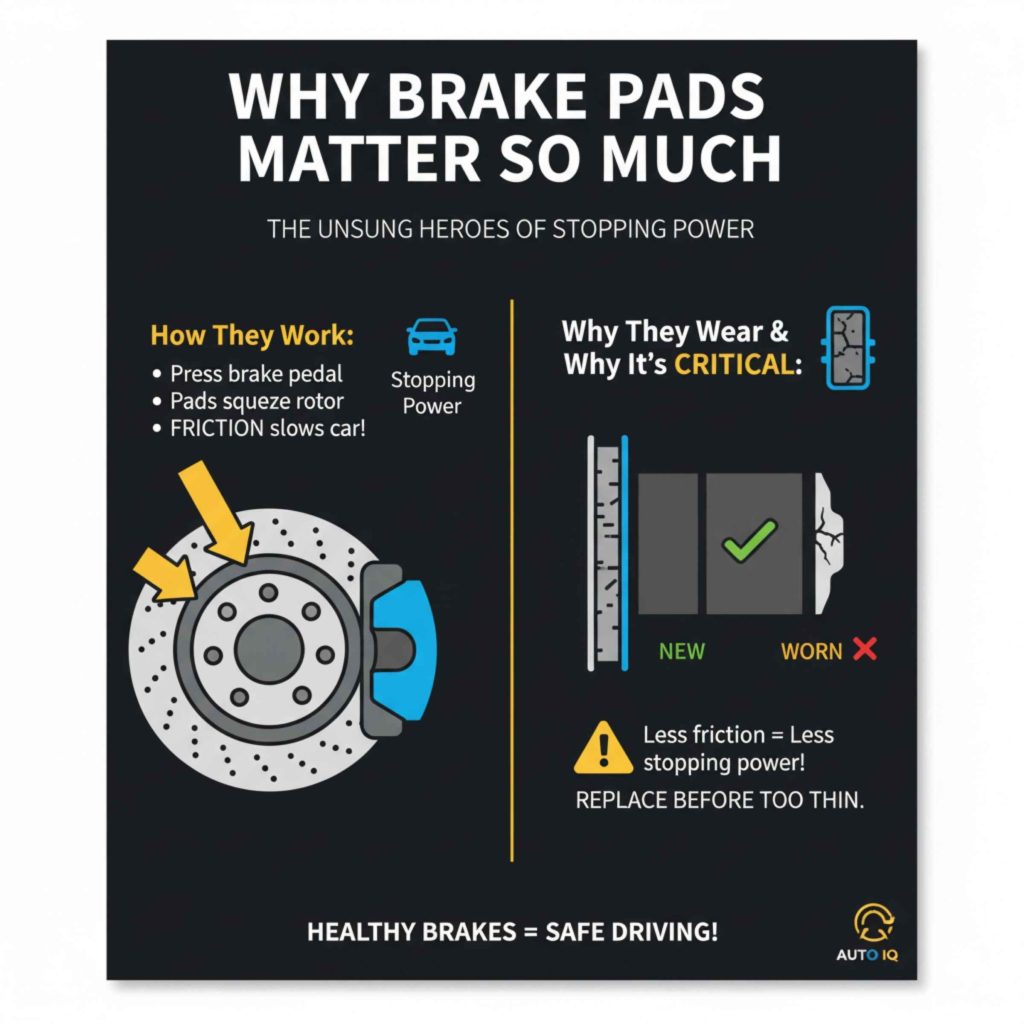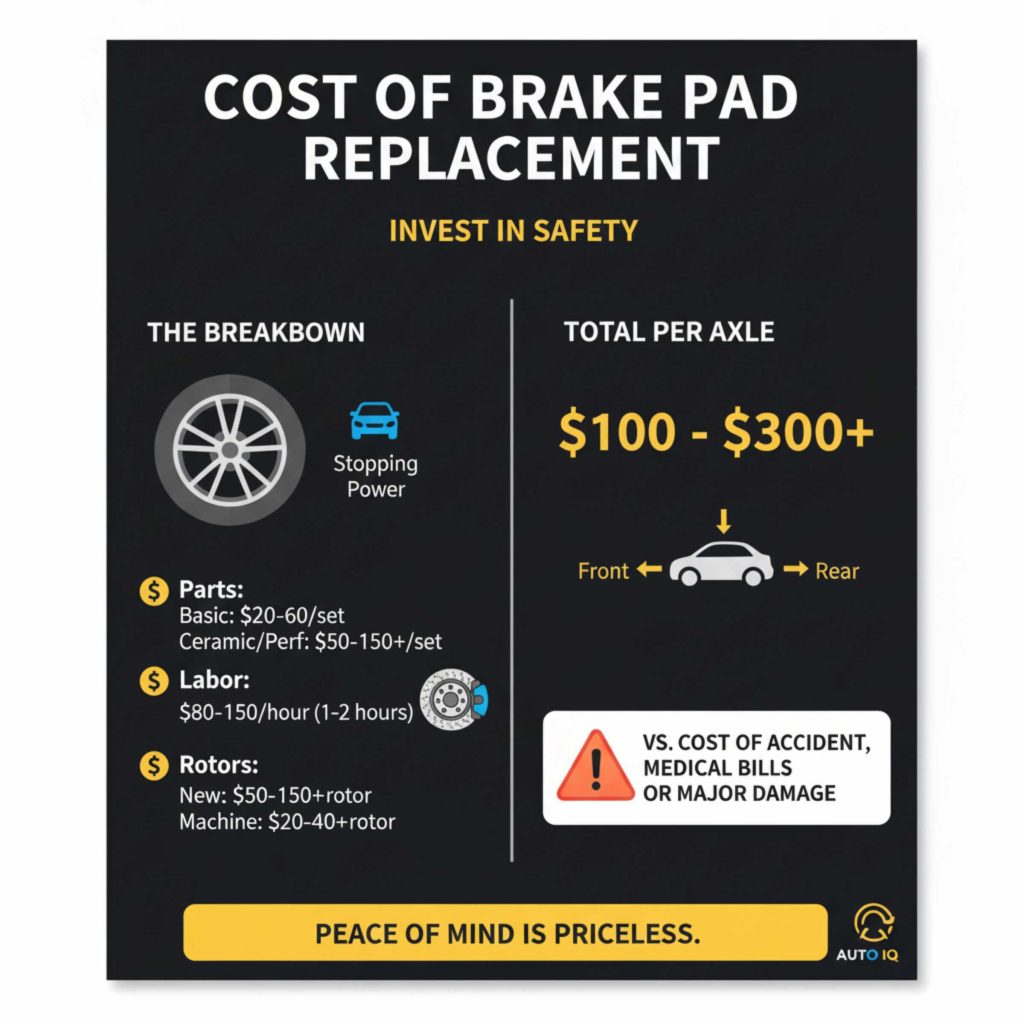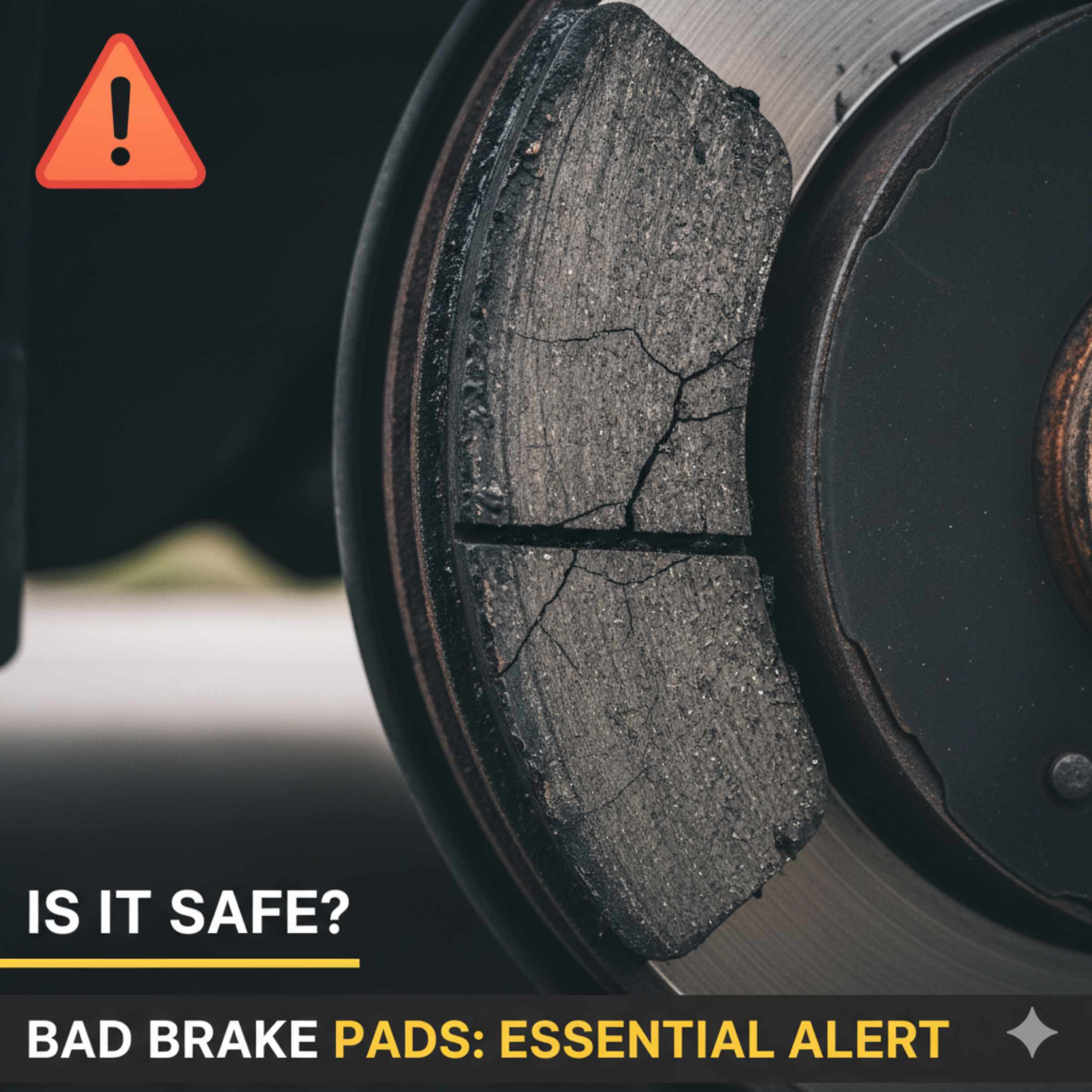Quick Summary: Driving with bad brake pads is extremely unsafe. It severely compromises your car’s ability to stop, putting you, your passengers, and everyone else on the road at serious risk. Get them checked and replaced immediately.
When your car’s brakes start to make strange noises or feel less responsive, it can be worrying. You might wonder, “Is it safe to drive a car with bad brake pads?” It’s a common question, especially when a repair might not fit into your budget right away. But understanding the risks is crucial. Your brakes are literally your car’s most important safety feature. Driving with worn-out brake pads isn’t just inconvenient; it’s a significant danger. This guide will walk you through why it’s so risky and what signs to look out for, so you can make informed decisions and keep yourself and others safe on the road. Let’s dive into what you need to know.
Why Brake Pads Matter So Much
Think of your brake pads as the unsung heroes of your car’s stopping power. When you press the brake pedal, these pads are forced against a spinning metal disc (the rotor) attached to your wheel. This friction is what slows down and stops your car. Without healthy, functional brake pads, this critical friction is dramatically reduced.
Brake pads are designed to wear down over time as they do their job. They’re made of a strong material that can withstand heat and friction. However, as this material gets thinner, it becomes less effective at gripping the brake rotor. This is a normal part of car maintenance, but it’s vital to replace them before they wear down too much.

The Dangers of Driving with Worn Brake Pads
Ignoring worn brake pads is like playing a dangerous game of chance with your safety. The consequences can range from minor inconveniences to catastrophic accidents.
Reduced Stopping Power
This is the most immediate and severe risk. When brake pads are worn, they can’t create enough friction to stop your car effectively. This means it will take much longer for your car to come to a complete halt, especially in an emergency. Imagine being in a situation where you need to brake suddenly—in heavy traffic or to avoid an obstacle. Significantly longer stopping distances can be the difference between a near miss and a serious collision.
Brake System Damage
Brake pads usually have a small metal indicator designed to make a squealing noise when the pad material is getting low. However, if you ignore this warning sound, the friction material can wear away completely. This leaves the metal backing plate of the brake pad in direct contact with the metal brake rotor. This metal-on-metal contact is incredibly damaging. It can:
- Scratch and warp the brake rotors, requiring you to replace both the pads and the rotors.
- Damage the brake calipers, which are more expensive components to repair or replace.
- Potentially damage brake lines if the caliper is severely compromised.
Repairing these additional damages will significantly increase the cost of your repair compared to just replacing the brake pads when they first indicate wear.
Brake Failure
In extreme cases, critically worn brake pads can lead to complete brake failure. If the friction material is gone, the caliper might not be able to properly clamp onto the rotor. In some situations, the caliper itself could fail or even break apart. This means your brakes could stop working altogether, leaving you with no way to slow down or stop your vehicle. This is an incredibly dangerous situation that can lead to devastating accidents.
Loss of Control
Worn brake pads can also affect your car’s handling. Uneven wear on the pads or compromised rotor surfaces can cause your car to pull to one side when you brake. This loss of control, even if minor, can be dangerous, especially at higher speeds or during maneuvers.
Increased Stopping Distances
Even if your brakes haven’t completely failed, worn pads mean your stopping distance is longer. This is not just an academic point; it’s a critical safety factor. According to the National Highway Traffic Safety Administration (NHTSA), vehicle speed has a significant impact on stopping distances. Doubling your speed can quadruple your stopping distance due to both reaction time and the vehicle’s physics. With worn brakes, that already extended distance becomes even more perilous.
Signs That Your Brake Pads Need Attention
Fortunately, your car usually gives you plenty of warning signs before brake pads become dangerously worn. Being aware of these signs can help you catch problems early.
Screeching or Squealing Noises
This is the most common indicator. Most brake pads have a small metal tab called a wear indicator. When the pad material wears down to a certain level, this metal tab starts to rub against the brake rotor, creating a high-pitched squealing or screeching sound. This sound typically happens when you’re lightly applying the brakes, but it can sometimes be heard even when you’re not braking, as the pads lightly touch the rotor.
Grinding Sounds
If you hear a deep grinding or scraping sound when you brake, this is a much more serious warning. It usually means the friction material on your brake pads has completely worn away, and the metal backing plate is now grinding directly against the metal brake rotor. This indicates immediate damage is occurring and requires urgent attention.
Vibrations or Pulsations
Feeling vibrations or a pulsating sensation in the brake pedal or steering wheel when you apply the brakes can indicate a problem. This is often a sign of warped brake rotors, which can be a consequence of worn-out brake pads or overheating. Warped rotors can’t provide consistent friction, leading to these sensations.
Spongy or Soft Brake Pedal
If your brake pedal feels “spongy” or softer than usual, and you have to press it further down to engage the brakes, this could be a sign of air in the brake lines or a problem with the brake fluid level or master cylinder. While not directly a “bad brake pad” symptom, it’s a brake system issue that significantly impacts your ability to stop and should be addressed immediately.
Car Pulls to One Side When Braking
As mentioned earlier, if your car consistently pulls to the left or right when you apply the brakes, it could indicate that one set of brake pads is more worn than the other, or there’s an issue with the brake caliper on one side. This uneven braking can reduce your control.
Visual Inspection
If you’re comfortable looking at your car’s wheels, you can sometimes visually inspect the brake pads. With the wheel on, look through the spokes of the wheel towards the brake caliper. The brake pad is a distinct piece of material located between the caliper piston and the rotor. If the pad material looks very thin (less than about 1/4 inch or 6mm), it’s likely time for a replacement.
Understanding Brake Pad Material & Lifespan
Brake pads are made from various materials, each with its pros and cons. The type of pad can influence its lifespan and performance.
Common Brake Pad Types
| Brake Pad Type | Description | Pros | Cons | Typical Lifespan |
|---|---|---|---|---|
| Organic (Non-Asbestos Organic – NAO) | Made from a blend of rayon, fiberglass, rubber, and other materials. | Quiet, gentle on rotors, inexpensive. | Wear out faster, produce more brake dust, less effective in extreme heat. | 20,000 – 40,000 miles |
| Semi-Metallic | Contain a high percentage of metal fibers (steel, copper, iron) mixed with fillers. | Good heat dissipation, durable, perform well in various conditions. | Noisier than organic, produce more dust, can wear rotors faster. | 30,000 – 50,000 miles |
| Ceramic | Made from ceramic fibers, non-ferrous metals, and bonding agents. | Quiet, produce very little dust, long-lasting, consistent performance. | More expensive, can be less effective in very light braking, may require more heat to perform optimally. | 40,000 – 60,000+ miles |
| Low-Metallic | A hybrid of organic and semi-metallic, with about 30-65% metal content. | Good balance of performance and noise, better heat handling than organic. | Can be dusty, wear rate varies depending on composition. | 30,000 – 50,000 miles |
Factors Affecting Lifespan
The lifespan of your brake pads isn’t just about the material. Several other factors play a role:
- Driving Habits: Frequent hard braking, stop-and-go city driving, and aggressive acceleration followed by sudden braking will wear pads down much faster than gentle highway driving.
- Vehicle Weight and Load: Heavier vehicles or those frequently carrying heavy loads need more force to stop, increasing brake pad wear.
- Driving Conditions: Driving in hilly or mountainous terrain, or in wet or dusty environments, can also affect how quickly brake pads wear out.
- Brake System Maintenance: Ensuring your brake fluid is at the correct level and the brake system is clean and properly lubricated can help pads last longer.
What To Do If You Suspect Bad Brake Pads
Don’t panic if you notice any of the signs above! The key is to act promptly.
Step 1: Stop Driving If Necessary
If you hear loud grinding noises, experience a very soft or sinking brake pedal, or notice a complete loss of braking power, it’s safest to pull over immediately (if you can do so safely) and call for a tow truck. Continuing to drive in these conditions is extremely dangerous.
Step 2: Get an Inspection
For any less severe signs like squealing, pulling, or a slightly less responsive pedal, the first step is to have your car inspected by a trusted mechanic as soon as possible. A reputable mechanic will be able to perform a thorough inspection of your entire braking system.
Step 3: Understand the Repair
During the inspection, the mechanic will check:
- Brake pad thickness.
- Brake rotor condition (for wear, warping, or scoring).
- Brake caliper operation.
- Brake fluid level and condition.
- Brake lines and hoses for leaks or damage.
They will explain their findings and recommend the necessary repairs. For example, if your pads are worn, they’ll likely suggest replacing them. If rotors are damaged, those will need replacement or “machining” (resurfacing) if they’re salvageable.
Step 4: Get it Repaired Promptly
Once you understand the issue and the proposed solution, arrange for the repairs. Prioritize this over other non-essential car maintenance, as your brakes are your primary safety system. Many repair shops offer same-day service for brake jobs.
Can You Drive a Short Distance with Bad Brake Pads? The Verdict
Here’s the honest answer: While a mechanic might tell you it’s okay to drive for a very short distance to get to their shop if the issue is minor (like squealing), it’s never truly safe. Every moment you drive with compromised brakes, you increase your risk of an accident.
Consider this: brake pads are designed to wear out gradually. This gradual wear is what provides the warning signs. However, the point at which they become “bad enough” to be significantly unsafe is a moving target. What might seem like a little squeal could mean you’re only a few hard stops away from metal-on-metal grinding.
Think of it like this: is it safe to eat a little bit of poison? Probably not. The dose might be small, but the risk is still there. Similarly, is it safe to drive with “a little bit” of bad brakes? The risk is still elevated.
Recommendation
If you suspect any issue with your brakes, the safest course of is to minimize driving and get them inspected immediately. If possible, park the car and arrange for it to be towed to a repair facility. If you absolutely must drive a short distance, do so at very low speeds, avoid heavy traffic, and be extremely cautious. However, this is a last resort, not a recommendation.
Cost of Brake Pad Replacement
The cost of replacing brake pads can vary widely depending on your vehicle, the type of pads you choose, and your location. Generally, you can expect to pay anywhere from $100 to $300 per axle (front or rear wheels) for parts and labor.
Here’s a general breakdown:
- Parts: Basic organic or semi-metallic pads might cost $20-$60 per set. Ceramic or high-performance pads can range from $50-$150+ per set.
- Labor: Mechanics typically charge between $80-$150 per hour, and a brake pad replacement can take 1-2 hours per axle.
- Rotors: If your rotors also need replacing, add another $50-$150+ per rotor, plus labor for replacement. Machining rotors can be cheaper, around $20-$40 per rotor.
While this is an expense, it’s significantly less than the potential cost of an accident, medical bills, or major damage from ignoring the problem. Many sources, like Edmunds, offer further insights into brake maintenance costs.

Frequently Asked Questions (FAQ)
Q1: How often should I replace my brake pads?
A: Brake pads typically need to be replaced between 25,000 and 65,000 miles, but this varies greatly depending on your driving habits, the type of pads, and your vehicle. Always follow the sound and feel of your brakes rather than just relying on mileage.
Q2: Can I replace only the front or rear brake pads?
A: Yes, brake pads are typically serviced in axle sets (both front or both rear). You don’t necessarily need to replace all four sets at once unless they are all worn out. However, mechanics often recommend replacing them in pairs for balanced braking.
Q3: My brakes are making a squealing noise, but they still work. Is it urgent?
A: Squealing is usually the first warning sign. While they still work, it means the wear indicator is being pushed against the rotor. It’s not an immediate emergency like grinding, but you should schedule an inspection and replacement within the next week or two to avoid further damage or safety issues.
Q4: What’s the difference between brake pads and brake rotors?
A: Brake pads are the friction components that are pressed against the brake rotors. Brake rotors are large metal discs attached to your wheel hubs that the pads clamp onto to slow the car. Both are essential parts of the braking system.
Q5: Is it okay to drive with warped brake rotors?
A: Driving with warped rotors is not recommended. They can cause vibrations, reduced braking efficiency, and can lead to accelerated wear on your brake pads. It’s best to have them inspected and either resurfaced or replaced.
Q6: Will driving with bad brake pads affect my car’s performance in other ways?
A: Primarily, it affects your ability to stop safely. However, if the brake issues are severe or lead to damage in other components (like calipers or rotors), it could potentially affect your car’s overall handling and even lead to a seized wheel in extreme, rare circumstances.
Conclusion
Your car’s brakes are arguably the most critical safety system. Driving with worn brake pads significantly increases your risk of accidents by lengthening stopping distances and potentially leading to a complete loss of braking power. The warning signs, like squealing or grinding noises, are your car’s way of telling you it needs attention. Don’t gamble with your safety or the safety of others. If you suspect your brake pads are worn, the most responsible action is to have them inspected and replaced by a qualified mechanic as soon as possible. It’s a vital maintenance task that ensures you can stop safely when it matters most.

